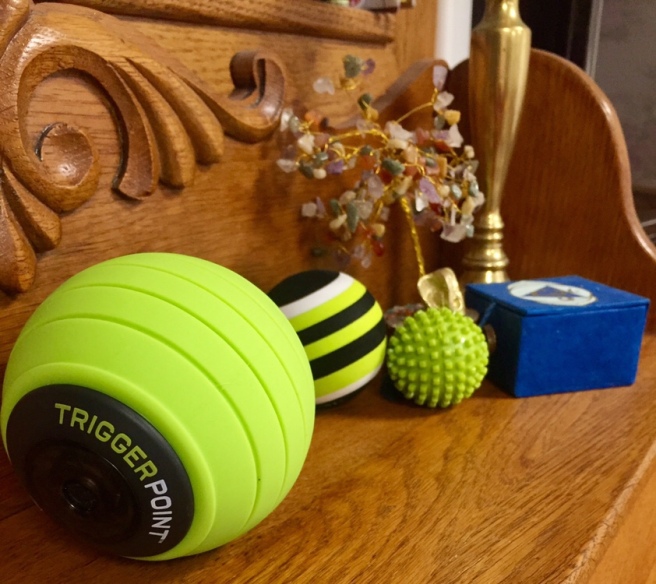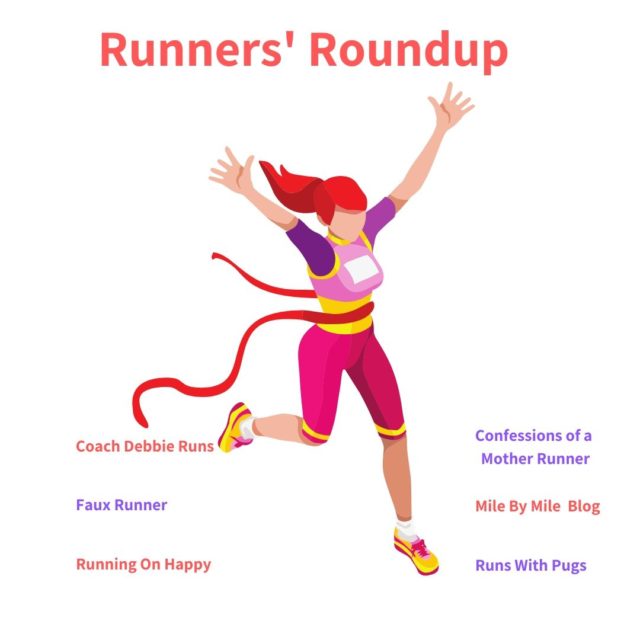Could you be foam rolling all wrong — and for the wrong reasons? Maybe! I’ve taken several mobility and self myofascial release courses over the last year (and am eyeing yet another one!).
Today I’m sharing my biggest takeaway that I heard at pretty much all of these courses.
Disclaimer: I’m not a medical professional or physical therapist. I can’t diagnose what may be wrong with you. Always check with a doctor first.
It’s not about ironing out our fascia
Back in the day when I started foam rolling, I was taught that it basically takes our jumbled fascia (which creates pain and stiffness) and irons it out, so to speak, so that all those jumbled fibers are more organized.
Turns out that’s not really what foam rolling does.

It’s all in your head
Maybe not all, but like most things running, the truth is it’s often not so much a body limitation, but a neuromuscular protection mechanism.
You know how when you’re doing a long run, and you feel tired towards the end? A lot of that is actually coming from your brain — it’s trying to protect you from injuring yourself, and slowing down is a great way to potentially protect from injury.
Your nervous system acts the same way to protect your connective tissue. It can send you pain to basically get you to stop whatever it is you are doing that it perceives as a threat.
Your nervous system basically says stop yourself! (by triggering pain) before you wreck yourself (injure yourself).
Foam rolling basically tells your brain that oh! it’s okay to feel that pressure. You can tolerate that pressure; it’s not a threat.

Do you really need to roll at all?
I’ve shared my foot compression routine. The problem with rolling is you generally don’t get as deep pressure as you do by simply putting pressure on the foot (or wherever else you usually roll).
It also takes sustained pressure to get into your nervous system — without those longer holds, your nervous system doesn’t have time to calm down and realize that this sort of pressure isn’t a threat after all.
Can rolling hurt you? Well, yes, it can, but only if it’s done improperly (rolling on bones, over new scars, if you have a serious illness). In general you can foam roll to your hearts’ content — but you may not get the results you’re after.
If done properly foam rolling will not hurt you. It just may not actually heal you.
Should I just throw out my foam roller?
Nooooo! Foam rolling is very beneficial at certain times. That’s another thing I learned — when and how to foam roll — but that’s a post for another day.
Let’s end with a little experiment. I want you to roll your left foot. Do it however you normally do it. Walk around. Notice the difference between your left and right feet.
Next try simply draping your foot over the same ball you used with your right foot. In front of the fat pad on your heel on the inside and the outside. Then just below the ball of the foot, on the inside and outside of your foot. Hold for at least 90 seconds in each location.
Walk around again.
Which foot feels better?
What else do you notice about your feet after doing this?
Have you gotten results with foam rolling?

Linking up with Zenaida Arroyo and Kim @ Kookyrunner
This week I am also joining up with the new Runners’ Roundup linkup.


Such a useful post, Judy!
This was exactly what I thought foam rolling does – iron out the fascia.
But your explanation makes so much sense.
I need to try your experiment again on a carpet. I tried to do it right now with the little ball I have under my desk. But it keeps on rolling away on the stone floor when I try to hold it for 90 seconds.
My guess is the sustained pressure will have a greater effect. 😉
LikeLiked by 1 person
I think there is still probably some truth to foam rolling realigning the fascia, and there are times you definitely still want to foam roll.
🤣 about your ball rolling away!
LikeLiked by 1 person
Who to believe?
Doctors and Chiros and PTs all have different advice. And then there’s the Internet.
Some say roll, some say press. Some say before you exercise, some say after.
I don’t have a foam roller and right now I like my massage gun because it does all the work. lol
LikeLiked by 1 person
Direct experience is always more important. If it ain’t broke don’t fix it, as they say.
LikeLike
which is why I do nothing… and then if I feel that I am injured, see a real doctor or my chiro (whom I love)
LikeLiked by 1 person
The only problem with that is prehab can prevent getting injured & seeing a dr. You have plenty of company in that view though.
LikeLike
maybe. 2 injuries in 12 years I think is pretty good (not counting broken bones)
LikeLiked by 1 person
I bought a foam roller when I was dealing with ITBS. All I know is, I haven’t had a single bout of ITBS after I started foam rolling, so I would say it has worked for me! I also roll the rest of my legs and sometimes my neck and back. I believe I would have had many more injuries than I have if not for my foam roller.
LikeLiked by 1 person
One of the keys is really rolling most of the body because it’s all connected!
They say not to foam roll your IT at all, because it’s really too dense. I used to do it & think it helped. Too. Now I have a different technique I’m using though.
LikeLiked by 1 person
Back when I was dealing with chronic piriformis syndrome, I’d often take breaks from rolling and just “sit” on my roller, putting steady pressure on the affected area. It actually felt better than rolling…little did I know, I was on to something 😉 The PF recurs, on occasion, but it’s not been more than a nuisance as long as I do my warm-ups/cool-downs consistently. Funny how that works 😉
LikeLiked by 1 person
You are smart Kim. 😊
LikeLike
I haven’t foam rolled for a long time! Kind of interesting but I really think that as I’ve gotten stronger, my muscles recover better. I’m not sure why that is but I don’t miss the pain from rolling, lol
LikeLiked by 1 person
There are parts I actually love to do SMF on & other parts not so much.
Glad you found what works for you.
LikeLike
I’ve been learning this about foam rolling recently too! I was actually listening to a podcast about it recently. Very interesting! I will need to try the ball experiment tomorrow.
LikeLiked by 1 person
It’s the new science! Everything is always changing. I found it really helpful & that’s why I pass it along.
LikeLike
Very interesting. When I’m rolling my ITB I try to hold on a “sweet spot” until I feel release. That really makes a difference.
LikeLiked by 1 person
That is a great recovery technique & I do that too.
LikeLike
I have never used a foam roller. Most of my running friends do. I’m not sure I would even know when I needed to and how to do it.
LikeLiked by 1 person
I think it’s dry helpful (although you can mostly use balls too). Always great to have the info in case you ever need it.
LikeLiked by 1 person
I agree.
LikeLiked by 1 person
I did an online strength course with Coach Nicola (she has linked up with us in the past). She started each session with rolling our feet with a tennis ball. I really felt the difference. I haven’t kept up with it but I need to go back to it as I found it very useful. I’m looking forward to your post on when and how to use the foam roller!
LikeLiked by 1 person
It’s so hard to make time for all the things we want to do!
LikeLike
I can definitely feel a difference when I foam roll or theragun! It has really helped with my Achilles (rolling my calves.) I’m a believer 🙂
LikeLiked by 1 person
Glad that it’s worked so well for you.
LikeLike
I have several foam rollers but do not use them as much. I have a massage gun and I love it!. When I had plantar fasciitis, I used a foot roller and foam rolled my calves and that helped a lot.
LikeLiked by 1 person
I think rolling calves seem to fix most things. 🤣
LikeLiked by 1 person
I could have written exactly what Runninttotravel did. I bought my foam roller as a way of recovering from ITBS and it’s done just that for 14 years. That said, I never roll directly on my ITB I go either in front of or behind it. I do also pause and apply pressure to areas so yes to that as well. Rolling the feet is something I’ve never done. Knock wood, no PF here. Although it seems like a foot roll would feel awesome!
LikeLiked by 1 person
No PF here either, but other foot issues. Didn’t have any til a few years ago.
LikeLike
This is very interesting! I have some nervous system problems since having Covid, so I had to stop foam rolling because my pain was misinterpreting it as pain.
LikeLiked by 1 person
I’m so sorry to hear that & that you still continue to struggle with the aftereffects of COVID.
LikeLike